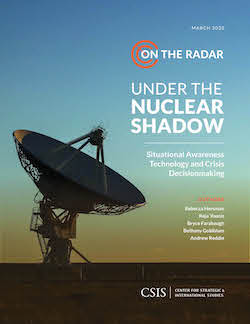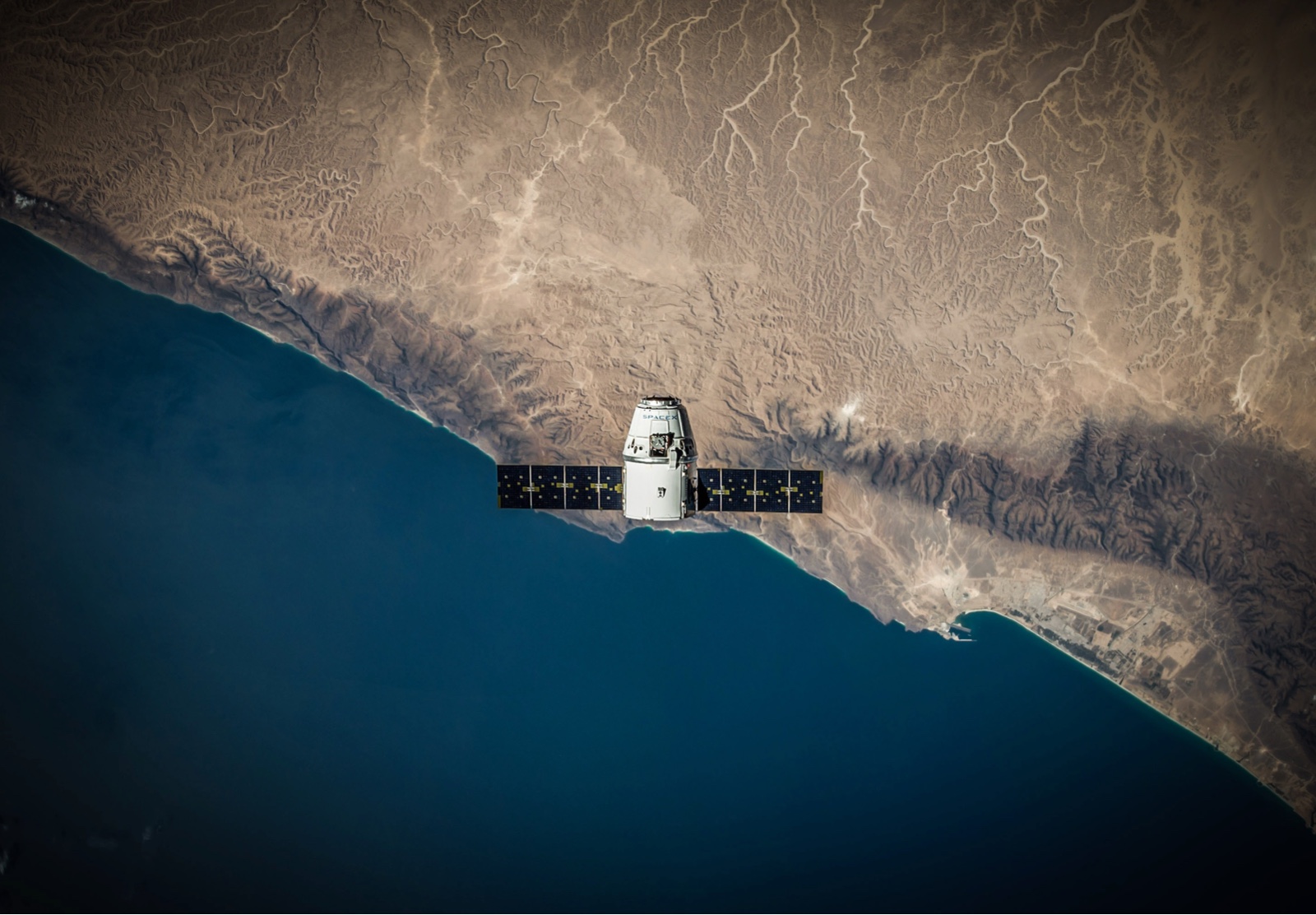A study on Situational Awareness and Strategic Stability
Modern technologies have the potential to provide significant operational advantages by allowing unprecedented insight into adversary capabilities, activities, and potentially even intentions.
These advanced capabilities can greatly enhance our situational awareness, but they can also introduce new risks, especially in crises or conflicts between nuclear-armed states.
To make sound, strategic decisions, it is imperative to understand how these modern situational awareness systems and technologies could impact risk perceptions and crisis pathways by either creating incentives to escalate a crisis or heightening the potential for dangerous miscalculation.
This website is no longer updated. Please note that some content may no longer be accurate, and certain functionalities may not be available. For the latest information and content from CSIS Project on Nuclear Issues, please visit the CSIS website or PONI’s microsite the Next Generation Nuclear Network.
Final Report

Under the Nuclear Shadow

What is Strategic Situational Awareness (Strategic SA)?
the operating environment,
and
actual attacks from false alarms across the
The Changing Situational Awareness Ecosystem
Conventional
Capabilities that provide theater and battlefield-level situational awareness, to include related indications, warning or other operational information as well as information on the status, location, and condition of conventional assets and capabilities.
Nuclear
Capabilities that provide indications, warning or other operational information on the status, location, or condition of adversary nuclear weapons, delivery or command and control systems.
Traditional

The traditional strategic SA environment featured stratified and largely isolated capabilities.
- This enabled nuclear and conventional strategic SA to operate independently.
The passive nature of the ecosystem was designed to detect attacks, not anticipate or interfere with them.
- Traditional strategic SA-enhancing technologies operated fully outside of adversary territories and systems at long stand-off range.
- These systems could only detect actions once they had occurred, not anticipate future action, and existed largely out of range of adversary attack.
The bright line between strategic SA systems used for conventional and nuclear missions meant strategic SA assets could be fairly secure and compartmentalized.
- This dynamic made it harder for misinterpretation to occur between conventional and nuclear events.
- Systems such as command and control were considered sufficiently redundant and invulnerable to attack.
- SA assets were unlikely to be targeted in conventional conflict because the risks of nuclear escalation were clear and the benefits in the conventional battlespace were limited.
First deployed 1952
Sensors — A system of hydrophones used for tracking submarines.
Three radars became operational from 1960-1963; still in use today
Sensors — System of three ultra-high frequency radars that can track inter-continental ballistic missiles and provide space situational awareness. Upgraded in the 2000s to support missile defense.
RC-135A first deployed in 1964; since then 14 variants of the RC-135 have been deployed. Some remain in use today.
Sensors — Can collect and disseminate intelligence to characterize the operational environment. Two variants of the RC-135 were equipped to monitor ballistic missile launches, but the remainder only had a conventional mission.
United States' Strategic Situational Awareness CapabilitiesFirst four satellites launched 1970-1973; a total of 19 additional satellites have been launched since then to replace older satellites.
Space Platforms — Constellation of satellites that uses infrared imaging to constantly monitor the globe for ballistic missile launches (at land or at sea).
1972-present
Sensors — Aircraft with integrated command and control, battle management, and intelligence, surveillance and reconnaissance capabilities.
United States' Strategic Situational Awareness CapabilitiesTransitional

The rapid nature of technological advancement is complicating the ability to sustain a strategic SA ecosystem that remains stratified and passive; compartmentalized and secure. Technological developments in the conventional SA ecosystem have outpaced developments in the nuclear SA space, leading countries to increasingly rely on conventional SA capabilities for nuclear SA missions. At the same time, nuclear SA assets have begun to slowly take on some conventional missions. As a result, we are witnessing the collapse of the organized, stratified traditional SA ecosystem.
1990s-present
Cyber — I.e. North Korea stole U.S.-South Korean war plans after breaching South Korean military networks (2017)
1999-present
Unmanned Platforms — Remotely piloted vehicle that can provide near-real-time imagery and signals intelligence.
Upgrades to BMEWS radars began in 2005 and are ongoing.
Sensors — Software upgrades to BMEWS radars enable them to support missile defense.
Four dedicated SBIRS satellites launched 2011-2018. Some SBIRS sensors are co-hosted on other satellites.
Space Platforms — Replacement for DSP satellites; can detect a greater range of infrared signals, allowing for expanded mission set.
Emerging

The emerging SA ecosystem is highly networked, real-time, and dual use, creating a landscape that is highly capable but also murkier and more complex. The rapid pace of technological advancement along with the dual-use (nuclear and conventional) applicability of emerging capabilities and the blurring of lines between nuclear and conventional command and control are all reshaping the emerging landscape. Combined with an increasingly competitive security environment characterized by the use of grey zone or hybrid tactics designed to challenge and coerce at the sub-conventional level, this emerging SA ecosystem can provide vast amounts of information, more quickly and more precisely than ever before, including about new forms of strategic attack that may prove elusive to traditional warning systems.
2018 (est.)-present; program will likely go until early 2020s
Platform Control and Information Support — Project Maven will use machine learning and artificial intelligence to differentiate people and objects in drone footage.
Artificial Intelligence Analysis ApplicationsUnmanned Platforms — Unmanned Underwater Vehicles that allow access to shallow or previously difficult-to-penetrate waters and provide a dynamic platform for observation and detection.
Unmanned Underwater Vehicle (UUV) Systems for Submarine DetectionCyber — AI will enable attackers to more efficiently probe adversary networks for vulnerabilities that can be exploited to gain situational awareness.
Unmanned Platforms — Groups of small UAVs that can operate without operator input (using a collective “brain” instead to distribute tasks) to complete a mission
Space Platforms — Constellation of tens or hundreds of small satellites that provide persistent and resilient coverage of the earth.
Smallsats
"I think we've got to have a balance between optimism about what we can do with this technology but also realism about the dark side."
—SAM NUNN, Former U.S. Senator and Chairman Emeritus, CSIS Board of Trustees
Does this matter?
The emerging ecosystem defies previous limitations on speed, precision, and resiliency, as well as the quantity and quality of highly detailed information. It can improve confidence, increase insights, and expand warning times.
However, this new ecosystem may also introduce new risks, potentially undermining crisis stability by increasing the chance of first-mover incentive and miscalculation.
First-Mover incentive
The quantity and quality of information as well as its predictive nature can create increased pressure for offensive action.
Miscalculation
The fast pace at which large volumes of information can be relayed, the networked and blended* nature of the systems, and the method of collection can increase the risk that intentions can be misunderstood and responses unnecessarily escalatory.
* same strategic SA capabilities used to support both convention and nuclear capabilities


